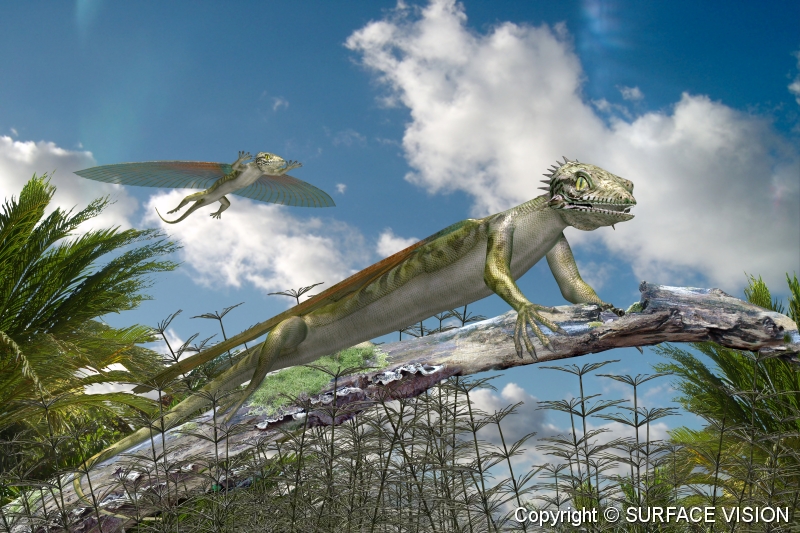Coelurosauravus
Coelurosauravus was one of the more intriguing diapseds (animals having two holes behind the eye for muscular attachment) to have evolved in the later stages of the Permian period, about 251 million years ago. Insects had been airborne for many millions of years already, but this little lizard seems to be the first evolutionary attempt made by reptiles to get into the air, probably in an attempt to catch this protein rich food source.
There exists today a small flying lizard, Draco that lives in Southeast Asia. This extends is ribs and a connecting membrane to form a wing that enables it to glide from tree to tree. But Coelurosauravus was something different altogether and there is no evolutionary link between the two animals. Their life style however must have been practically the same. Coelurosauravus had a separate set of articulated (movable) spines that extended from the vertebra of its backbone, so its wings would have made it a very effective glider indeed.
Examples of Coelurosauravus fossils have been found in Madagascar, Germany and England, but different species of these early gliding reptiles have been found in locations all over the world. These include Longisquama, Hypuronector and Icarosaurus from China, and Kuehneosaurus, a reptile glider found in Somerset in Southern England. This was one of the last of this evolutionary line, that seem to have died out faced with competition from the evolution of the first true flying reptiles, the pterosaurs. However the fossil of Kuehneosaurus dates from the late Triassic which means that Coelurosauravus and its kin were around for over 50 million years!
Although the spines that formed the wings of these gliding lizards could be moved, there is no evidence of any powerful muscular attachment, needed to allow the wings to flap; a prerequisite for true powered flight. However it fires the imagination to speculate as what may have happened had these animals responded to the competition from the pterosaurs and evolved powered flight and subsequently increased their size. With four limbs and a pair of wings this animal has the closest body form, in evolutionary terms, to that of the flying dragons of so many legends.
